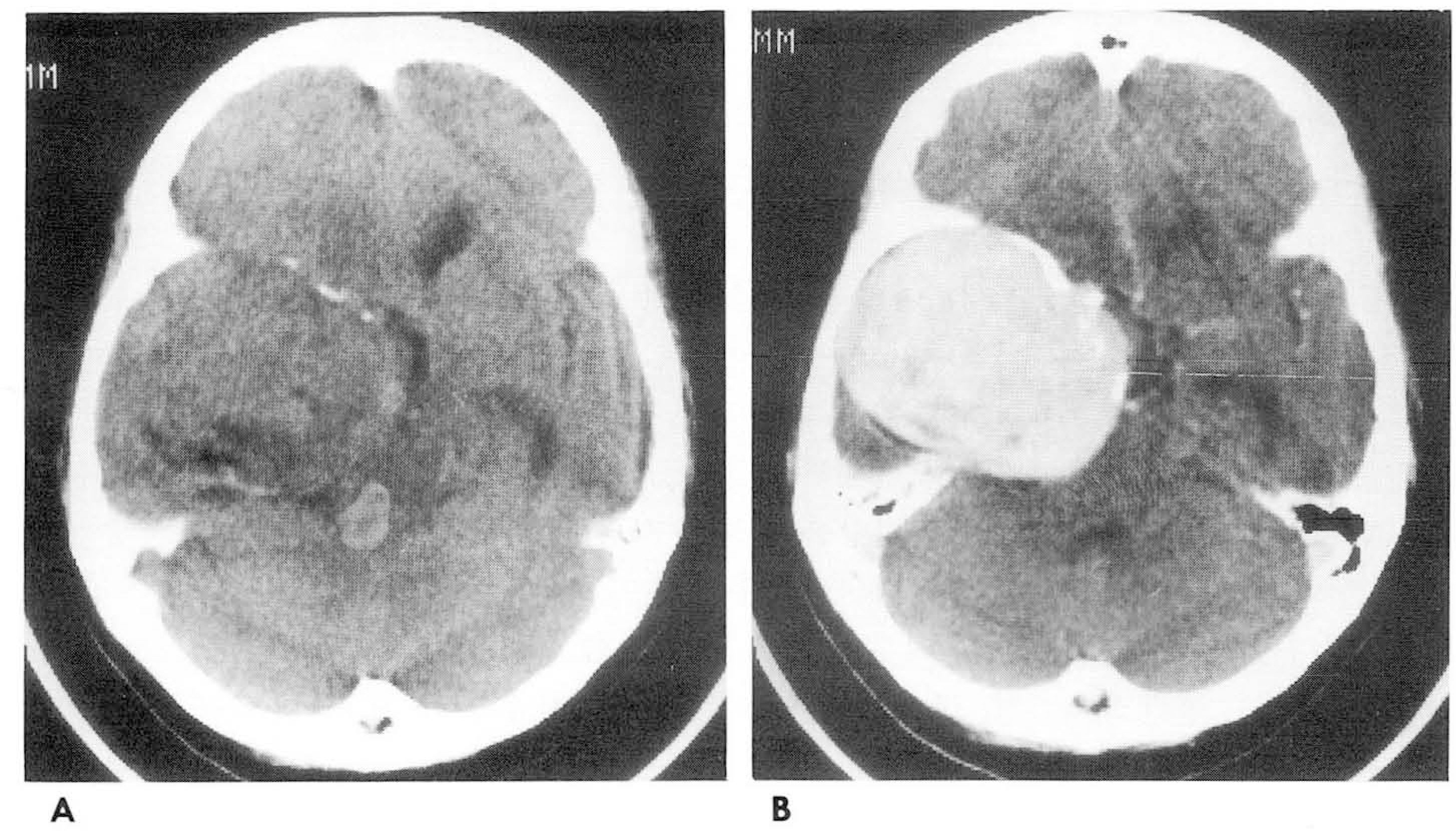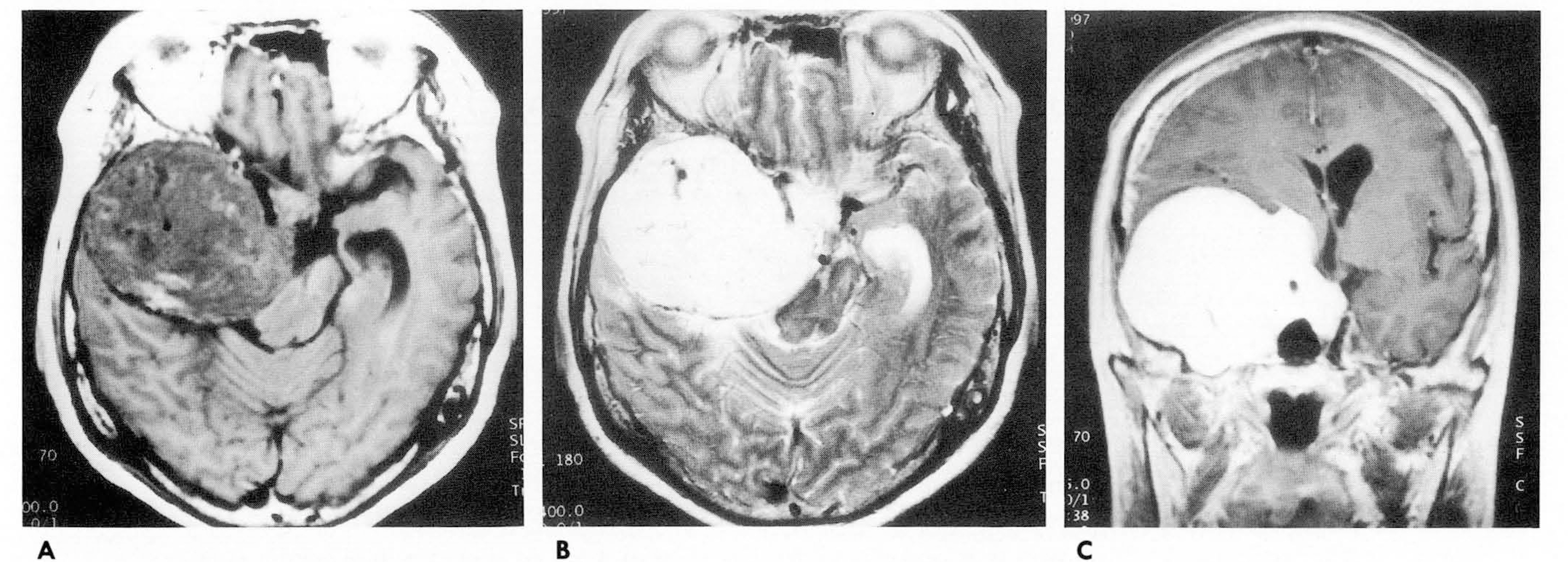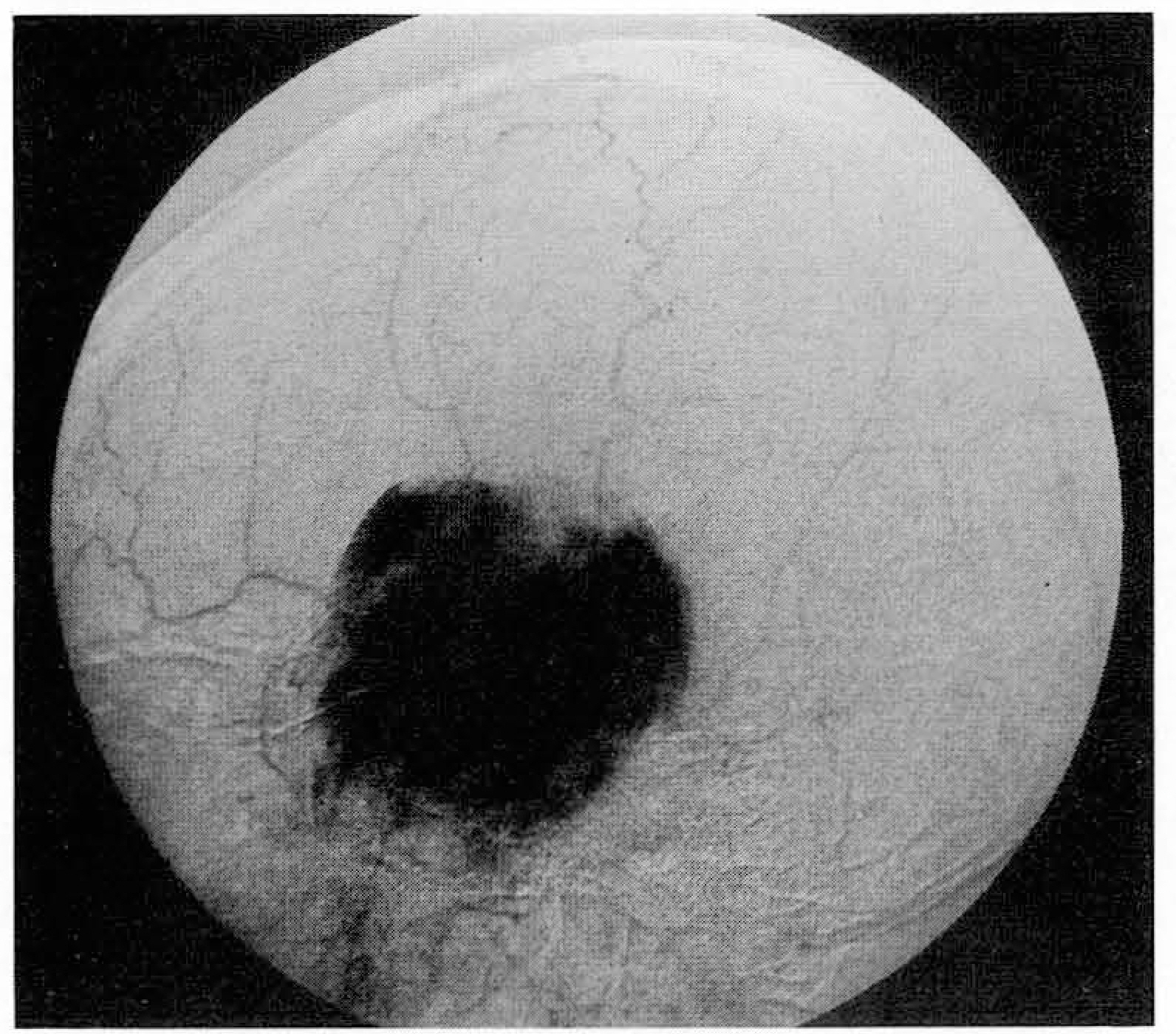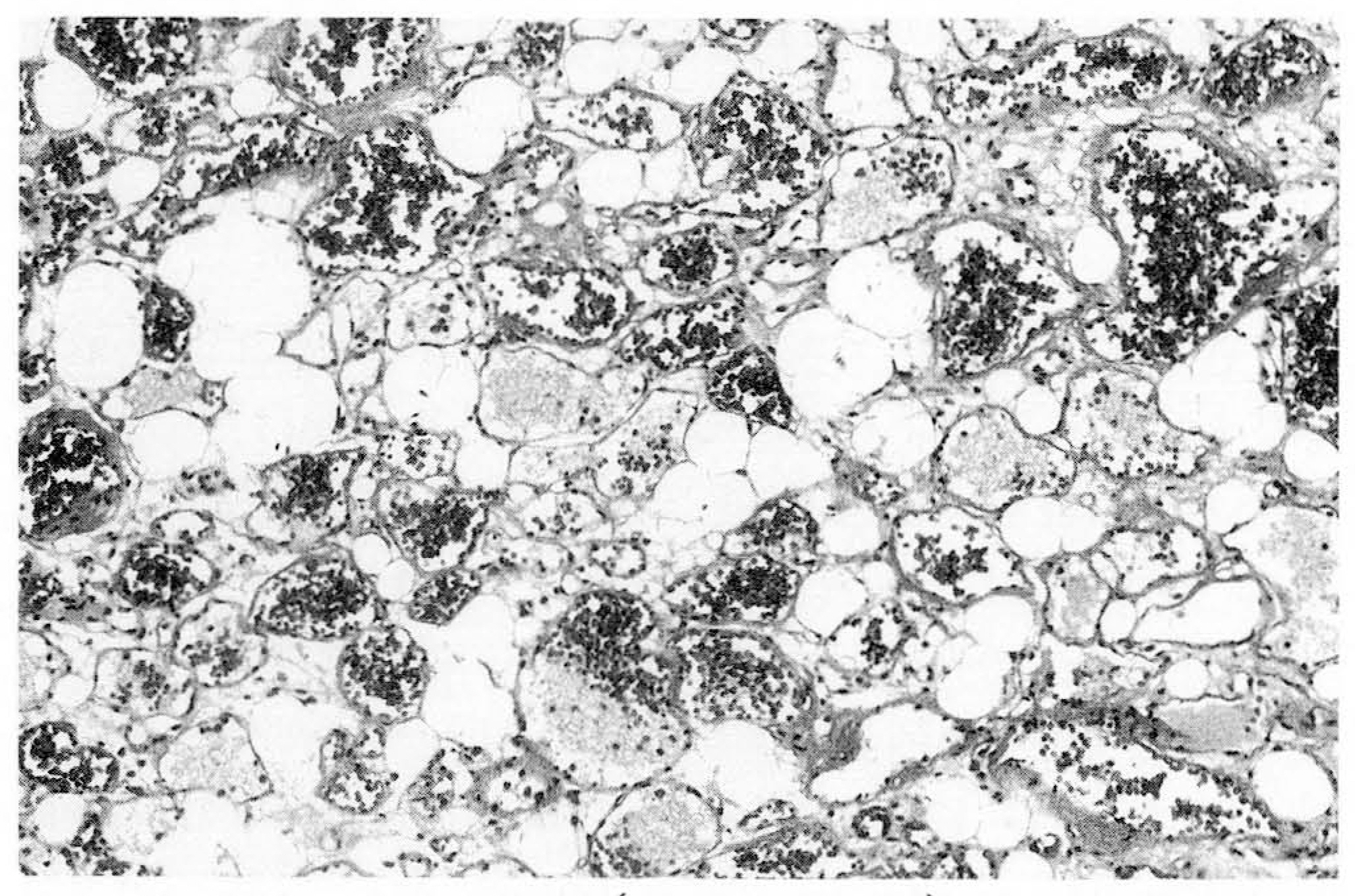J Korean Radiol Soc.
1998 Mar;38(3):411-413. 10.3348/jkrs.1998.38.3.411.
Intracranial Angiolipoma: A Case Report
- Affiliations
-
- 1Department of Diagnostic Radiology, Gumi Hospital, Soonchunhyang University.
- 2Department of Diagnostic Radiology, College of Medicine, Yeungnam University.
- 3Department of Anatomic Pathology, College of Medicine, Yeungnam University.
- KMID: 2201394
- DOI: http://doi.org/10.3348/jkrs.1998.38.3.411
Abstract
- Intracranial angiolipoma is extremely rare. We report the radiologic findings of angiolipoma in the rightmiddle cranial fossa, extending medially into the suprasellar and cavernous sinus region, in a 63-year-old woman.The lesion was a relatively well marginated extra-axial tumor that showed low density on precontrast CT and markedenhancement after contrast infusion. MR imaging showed heterogeneous low signal on T1W1 mixed with hyperintensefoci on T2W1, and marked enhancement after gadolinium infusion. On cerebral angiography, displacement of the rightinternal carotid artery by the tumor was seen. On an arteriogram of the right external carotid artery, the massshowed persistent capillary blush.
MeSH Terms
Figure
Reference
-
1.Bowen JT. Multiple subcutaneous haemangiomas together with multiple lipomas, occurring in enormous numbers in an otherwise healthy, muscular subject. Am J Med Sci. 1912. 144:189–192.2.Howard WR., Helwing EB. Angiolipoma. Arch Dermatol. 1960. 82:924–931.
Article3.Takeuchi J., Handa H., Keyaki A, et al. Intracranial Angiolipoma. Surg Neurol. 1981. 15:110–113.
Article4.Wilkins PR., Hoddinott C., Hourhan MD, et al. Intracranial Angilipoma. J Neurol Neurosurg Psychiatry. 1987. 50:10571059.5.Shuangshoti S., Vajragupta L. Angiolipoma of thalamus presenting with abrupt onset suggestive of cerebrovascular disease. Clin Neuropathol. 1995. 14:82–85.6.Prabu SS., O'Donovan DG., Gurusinghe NT. Intracranial Angiolipoma: report of two cases. Br J Neurosurg. 1995. 9:793–797.
Article7.Lin J J., Lin F. Two entities in angiolipoma. Cancer. 1974. 34:720–727.8.Salibi SS., Nauta HJW., Brem H, et al. Lipomeningioma: Report of three cases and review of the literature. Neurosurgery. 1989. 25:122–126.
Article9.Leroux P., Hope A., Lofton S, et al. Lipomatous meningioma-An uncommon tumor with distinct radiographic findings. Surg Neurol. 1989. 32:360–365.
Article





